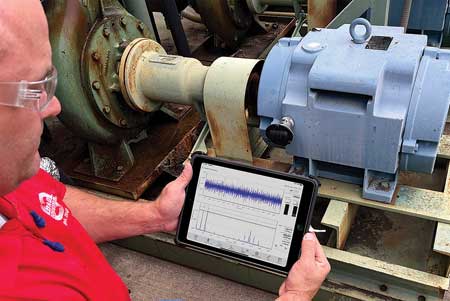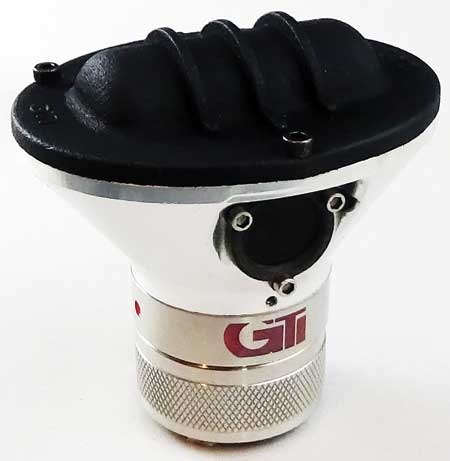
VibePro tech using iPad vibration reader

VibePro sensor
If you are reading this, you likely already understand the value of predictive maintenance: reduced downtime, improved efficiency and on-time delivery. Awareness is growing-but the real challenge is knowing where to begin. This guide outlines seven essential steps to help you plan and implement a successful predictive maintenance program at your facility.
Step 1: Inventory Your Equipment
Start by cataloging all your assets-critical and noncritical. You probably already have a list, but now is the time to enrich it with key details:
- Equipment type, age and condition
- Current maintenance practices (preventive or reactive)
- Historical failure data-specifics are ideal, but even general trends help
- Existing monitoring capabilities, especially for newer, sensor-enabled machines.
This inventory will reveal gaps and help you prioritize where to focus your resources.
Step 2: Prioritize by Criticality
Not all equipment needs the same level of monitoring. Classify assets into three tiers:
- Tier 1-Critical Assets: Equipment whose failure would halt production or pose safety/environmental risks. These require continuous, real-time monitoring.
- Tier 2-Important Assets: Machines that impact operations but are not mission-critical. A mix of wireless and route-based monitoring is typically sufficient.
- Tier 3-Standard Assets: Noncritical equipment with minimal operational impact. Periodic route-based monitoring usually works well here.
This tiered approach ensures your investment delivers the highest return.
Step 3: Secure Management Buy-In
Leadership support is essential. The most effective way to gain it? Show the cost of doing nothing. Build your case by:
- Quantifying past production losses due to equipment failure
- Including secondary costs like expedited repairs, overtime and quality issues
- Comparing those costs to the projected investment in predictive maintenance.
Yes, it takes effort, but a solid financial justification is key to moving forward.
Step 4: Choose Your Data Analysis Strategy
Collecting data is only half the battle. You also need to interpret it. Consider these options:
- In-house team: Do you have reliability engineers or technicians who can be trained in data analysis?
- New hires: Is your operation large enough to justify dedicated predictive maintenance staff?
- Outsourcing: Would a third-party provider offer better expertise and cost efficiency?
A hybrid model often works best-routine analysis in-house, with specialists brought in for complex cases or critical assets.
Step 5: Select the Right Technology
With your strategy in place, it is time to choose a solution. Options range from handheld gauges to portable all-in-one kits to fully scalable systems like VibePro 10. Evaluate solutions based on:
- Ability to monitor key parameters (vibration, temperature, oil condition, etc.)
- Compatibility with existing systems
- Ease of implementation and use
- Scalability for future growth
- Quality of reporting and actionable insights.
Step 6: Implement and Train
Roll out your program in phases. Start with a pilot on a few critical assets:
- Establish baseline readings
- Set alarm thresholds based on manufacturer specs and industry standards
- Train your maintenance team on new tools, workflows and response protocols.
Clear roles and responsibilities are essential: when an alert triggers, everyone should know exactly what to do.
Step 7: Measure and Improve
Predictive maintenance is a journey, not a one-time fix. To keep improving:
- Track KPIs like reduced downtime, cost savings and equipment longevity
- Refine alarm thresholds as needed
- Conduct regular program reviews
- Share success stories to build momentum
- Keep training your team on evolving best practices.
Transitioning from reactive to predictive maintenance takes planning and investment, but the payoff is worth it. By following these seven steps, you will build a more reliable, efficient and profitable operation.
GTI Predictive Technology can help you implement a predictive maintenance program at your facility.
Authored by GTI Predictive Technology
For more information contact:
GTI Predictive Technology
35 Zachary Road
Manchester, NH 03109
603-227-2383
info@gtispindle.com
www.vibepro.com
Setco
A Division of Holden Industries, Inc.
2255 Global Way
Hebron, KY 41048
877-545-3087
sales@setco.com
www.setco.com